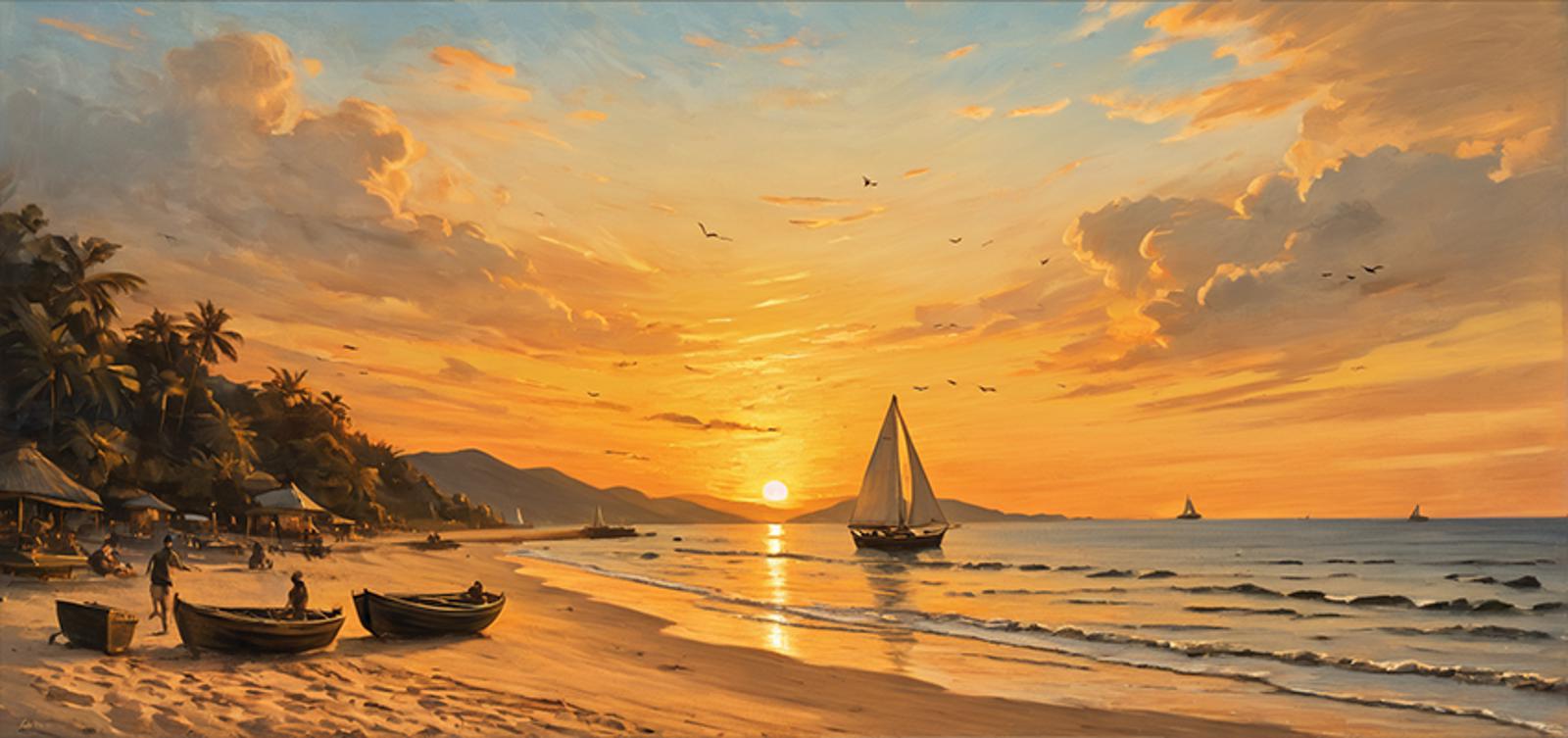The Golden Age of Creative Expression: The Impact of Generative AI
Introduction
The rise of AI systems capable of generating novel content such as images, text, and audio marks a paradigm shift comparable to previous transformative technologies. This generative AI is expanding creative expression by dissolving long standing barriers around training, institutions, and economic access that have historically confined artistic output to elite circles. The expansion of creative empowerment catalyses a symbolic renaissance, allowing diverse perspectives and worldviews to find expression through new hybrid aesthetic forms. As more individuals engage in creative acts augmented by AI, society undergoes an existential initiation into continuously re-authoring reality through imaginative expression.
Historical Context and Paradigm Shift
 Generative AI's impact is comparable to historical technological revolutions like Gutenberg's printing press, and later the internet, which liberated the written word from monopolistic control by elite institutions. Today, AI is unlocking creative expression across diverse artistic mediums by dissolving longstanding training, institutional, and economic barriers. This shift is reminiscent of the Renaissance, where artistic expression was no longer confined to those with the financial capacity and support to pursue artistic endeavours.
Generative AI's impact is comparable to historical technological revolutions like Gutenberg's printing press, and later the internet, which liberated the written word from monopolistic control by elite institutions. Today, AI is unlocking creative expression across diverse artistic mediums by dissolving longstanding training, institutional, and economic barriers. This shift is reminiscent of the Renaissance, where artistic expression was no longer confined to those with the financial capacity and support to pursue artistic endeavours.
While some traditionalists resist these changes, history shows that such paradigm shifts often face initial backlash before becoming widely accepted. This pattern can be seen across many areas of art and technology.
Similar patterns can be observed with the advent of photography. When the first cameras were introduced, many dismissed them as mere "mechanical" reproductions. Yet, as the medium evolved, photographers demonstrated photography's ability to capture the world in unprecedented detail and unleash new forms of artistic expression.
The transition from physical to digital music formats also encountered resistance, with many arguing that the convenience of digital would diminish the listening experience. Yet, the ease of access and discovery has made digital music the prevailing format.
Importantly, these advancements do not diminish the artistic expression found in traditional mediums. In fact, as new technologies displace older ones, the traditional artistic forms often become the last way for these time-lost treasures to remain in and be a part of our society. For example, as photography became more widespread, it did not replace painting and drawing, but rather enabled new artistic explorations that complemented traditional methods. Similarly, the rise of digital music has not eliminated the appreciation for vinyl records, which are now prized for their unique sonic qualities and the tangible experience they provide.
These examples illustrate how transformative advancements, despite initial backlash, often become widely accepted as their benefits become evident. The resistance to change is natural, but as society adapts, the once-radical ideas become the new normal, paving the way for further progress while preserving the artistic expressions of the past.
The Evolution of Artistic Mediums
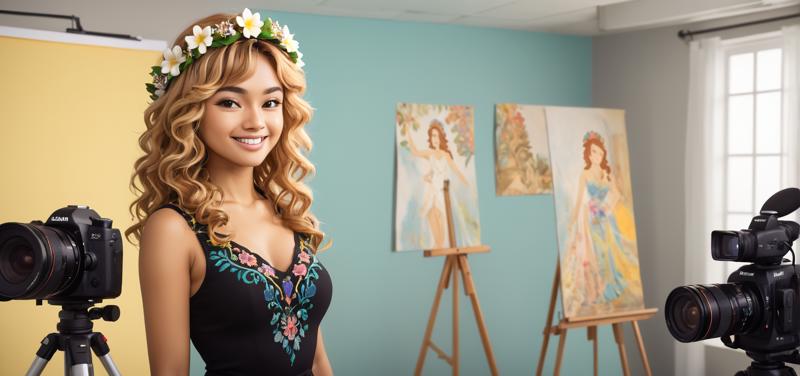 Traditional art, while always valued for its expressive depth, has often been hindered by the time and cost required to master and produce works. The advent of various technologies has continually usurped traditional artists in the workplace. The printer, camera, pen, and software like Photoshop have revolutionised how art is created and consumed, making the process more efficient and accessible.
Traditional art, while always valued for its expressive depth, has often been hindered by the time and cost required to master and produce works. The advent of various technologies has continually usurped traditional artists in the workplace. The printer, camera, pen, and software like Photoshop have revolutionised how art is created and consumed, making the process more efficient and accessible.
Similar transformations have occurred in other artistic mediums. In music, electronic instruments and digital production tools have expanded the possibilities of sound creation. Writing has been revolutionised by typewriters and electronic document creation, streamlining the process of drafting and editing. Even in sports, horse racing has seen a parallel in car racing, where technology has redefined the boundaries of competition and performance.
The rise of AI-powered artistic tools is not about replacing traditional art, but rather about expanding the spectrum of human creativity and artistic expression. These types of AI-powered creative tools are making art more accessible and opening up new avenues for creative exploration.
Some of the free access AI-powered tools that are enabling more individuals to create high-quality art include:
AI-assisted drawing and painting apps: Tools like Midjourney, DALL-E, and Stable Diffusion allow users to generate unique digital artworks by simply describing their desired imagery through text prompts.
AI-powered photo editing software: Applications like Photoshop's Neural Filters leverage machine learning to automate complex editing tasks, empowering users to enhance and manipulate images in sophisticated ways.
AI music composition platforms: Programs such as Amper Music and BandLab utilise AI algorithms to help users compose, arrange, and produce original music, even without formal musical training.
AI-generated 3D modelling and animation: Tools like Blender and Houdini integrate AI capabilities to simplify the creation of 3D models, animations, and visual effects.
Another example is ComfyUI, a graphical user interface (GUI) that acts as a middle layer between users and various machine learning-driven applications. ComfyUI integrates with popular multimedia software like Blender, Photoshop, and Stable Diffusion, providing a more user-friendly development interface for leveraging the power of these advanced technologies. Rather than requiring users to navigate complex Python code or machine learning packages directly, ComfyUI abstracts the underlying complexity and allows creatives to harness the capabilities of these tools through an intuitive GUI.
These advancements are broadening the pathways for artistic creation and experimentation, enabling more individuals to engage in the artistic process. However, they do not inherently resolve deeper systemic issues of marginalisation, bias, and inequity that have long plagued the traditional art establishment. The true democratisation of artistic expression remains a complex challenge that extends beyond the capabilities of these technologies alone.
Overall, the rise of AI-powered creative tools, including platforms like ComfyUI, is about expanding the spectrum of human creativity, not replacing traditional art forms. These tools are opening new doors for artistic exploration and expression, complementing rather than diminishing the value of established artistic practices.
Personalising Creative Potential and Cultural Metamorphosis
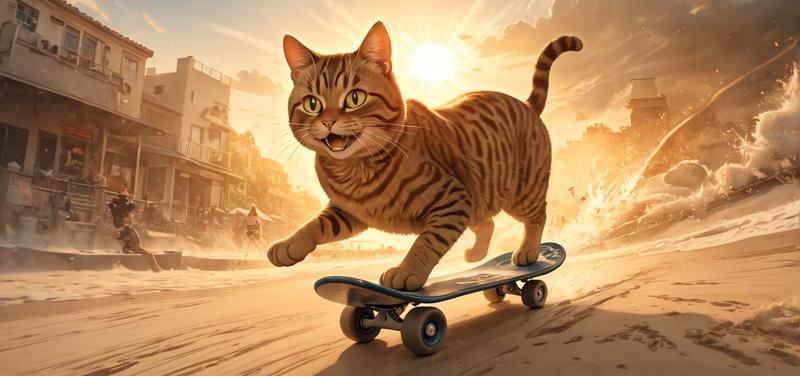 Generative AI represents a transformative shift in the realm of creative expression, unlocking a new era of artistic freedom and personal growth. By dissolving the traditional constraints that have long limited imaginative expression, such as technical skills, access to resources, and institutional gatekeeping, generative AI empowers individuals to freely explore and manifest their creative ideas.
Generative AI represents a transformative shift in the realm of creative expression, unlocking a new era of artistic freedom and personal growth. By dissolving the traditional constraints that have long limited imaginative expression, such as technical skills, access to resources, and institutional gatekeeping, generative AI empowers individuals to freely explore and manifest their creative ideas.
This newfound creative liberation marks an existential initiation, as it fundamentally alters the way individuals perceive and engage with their own reality. With the ability to seamlessly translate their thoughts, emotions, and experiences into tangible artistic forms, people can now actively participate in the continuous re-authoring of their personal narratives and the world around them.
Generative AI acts as a catalyst for this process of self-discovery and creative renewal. By providing intuitive tools and interfaces that allow users to experiment with various artistic styles, mediums, and concepts, these technologies encourage individuals to delve deeper into their own psyche, unearthing hidden talents, passions, and perspectives. This introspective journey enables people to gain a more profound understanding of themselves and their place in the world, fostering a greater sense of self-awareness and personal growth.
As individuals embark on this path of creative exploration, they enter a regenerative cycle of artistic expression and self-discovery. Each creative act, whether it be generating a unique visual composition, crafting a poignant piece of writing, or composing an emotionally resonant musical score, serves as a stepping stone in their personal evolution. The iterative nature of working with generative AI allows users to continually refine and build upon their creations, mirroring the ongoing process of personal development and self-actualization.
Moreover, the accessibility and democratisation of creative tools brought about by generative AI have the potential to foster a more inclusive and diverse artistic landscape. By lowering the barriers to entry and providing equal opportunities for creative expression, these technologies can amplify the voices and perspectives of marginalised communities, enriching the overall cultural tapestry of our society.
As we transition into this new phase of human experience, it is essential to recognize the profound impact that generative AI can have on our individual and collective consciousness. By embracing the transformative power of these technologies and actively engaging in the process of creative renewal and self-discovery, we can tap into the limitless potential of our imaginative faculties and redefine our relationship with the world around us. This existential initiation marks a pivotal moment in the evolution of human creativity, paving the way for a future where artistic expression becomes an integral part of our daily lives and a fundamental aspect of our personal growth and self-realisation.
Ethical Frameworks and Cultural Impacts
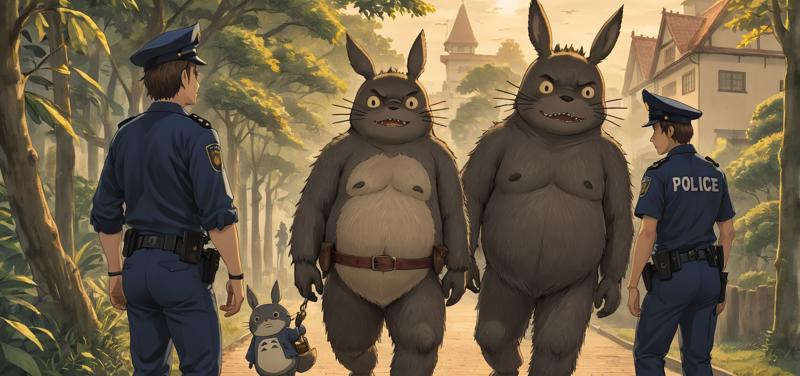 As generative AI proliferates, ethical frameworks prioritising the public good over capitalist interests are imperative. Data privacy, mitigating bias, sustainability, and socioeconomic equality must take precedence over corporate profiteering. Corporations frequently employ censorship under the guise of moral approval to suppress creative expression that threatens to limit valid and integral speech with the direct censorship of valid emotive language and furthermore in areas of scientific research such as modern anthropomorphic humanism. Such tactics reinforce systems that both hoard knowledge and human cognitive potential for exploitation and limit the capacity for these tools to offer insight and discovery into legitimate human expressive emotion, language, and activities.
As generative AI proliferates, ethical frameworks prioritising the public good over capitalist interests are imperative. Data privacy, mitigating bias, sustainability, and socioeconomic equality must take precedence over corporate profiteering. Corporations frequently employ censorship under the guise of moral approval to suppress creative expression that threatens to limit valid and integral speech with the direct censorship of valid emotive language and furthermore in areas of scientific research such as modern anthropomorphic humanism. Such tactics reinforce systems that both hoard knowledge and human cognitive potential for exploitation and limit the capacity for these tools to offer insight and discovery into legitimate human expressive emotion, language, and activities.
The prevalence of knowledge must be free from enclosures like restrictive copyright regimes that privilege corporations over individuals. Allowing corporate oligopolies to extend intellectual property protections into realms of generative AI only fortifies their exploitative control over human development and cognition. Public initiatives focused on democratising AI must replace privatised, capital-centric models.
Environmentally sustainable public AI development disconnected from profit motives is crucial. As automation rapidly restructures labour, governments must prioritise implementing substantive universal social support systems over protecting capital interests and employment legacy systems that relegate workers to precarity. Capitalist wealth extraction from automated production must be abolished to prevent societal chaos.
Generative AI fundamentally challenges entrenched capitalist constructs like proprietary ownership over creative output. Open democratised dialogue among the full diversity of creators, public advocates, and interdisciplinary knowledge holders is essential - bypassing captured corporate, legal, and technocratic institutions beholden to establish power structures.
Furthermore, generative AI has profound cultural implications across diverse global contexts. It can disrupt traditional art forms and rituals but also offers opportunities to preserve and regenerate endangered cultural practices. Ethical training of generative models on cultural archives can help encode and share unique symbolic knowledge with new generations. For marginalised communities, generative AI can provide a platform for equitable cultural self-representation. However, extreme precautions are necessary to avoid neo-colonial appropriation and ensure that cultural revitalisation initiatives are community-led and prioritise data sovereignty. Generative AI's potential to disrupt rigid identity constructs and traditional symbolic transmission lines could lead to a cultural metamorphosis.
As AI technology enhances our ability to express ourselves, we may enter a new era of diverse ideas and creative combinations. This could lead to a shared rediscovery of humanity's innate creativity.
Interdisciplinary Synergies and Pathways
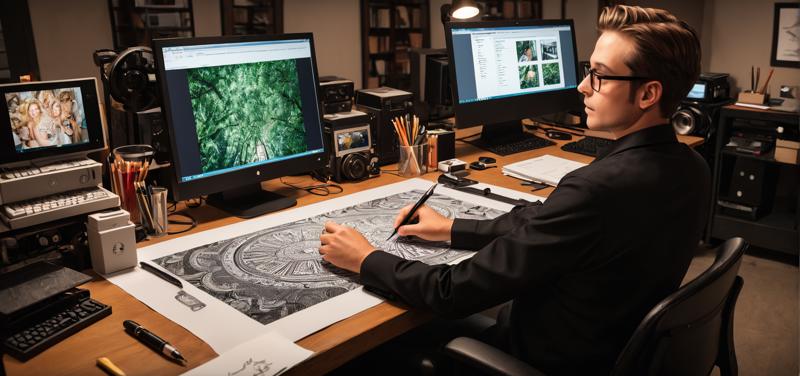 Generative AI catalyses insights and paradigm shifts across various scholarly and scientific domains. It challenges traditional notions of creativity and originality, raising questions about the cognitive architectures underlying human and machine intelligence. Neuroscientists, developmentalists, anthropologists, and linguists can all benefit from studying the mechanisms enabling AI's creative capabilities. Generative AI represents a potential framework for formalising the computational mechanisms underlying symbolic, conceptual, and cognitive emergence. This could lead to a unified theory of ideation and phenomenological experience, reshaping our understanding of consciousness and creativity.
Generative AI catalyses insights and paradigm shifts across various scholarly and scientific domains. It challenges traditional notions of creativity and originality, raising questions about the cognitive architectures underlying human and machine intelligence. Neuroscientists, developmentalists, anthropologists, and linguists can all benefit from studying the mechanisms enabling AI's creative capabilities. Generative AI represents a potential framework for formalising the computational mechanisms underlying symbolic, conceptual, and cognitive emergence. This could lead to a unified theory of ideation and phenomenological experience, reshaping our understanding of consciousness and creativity.
Unfortunately the censorship of AI models can significantly hinder the study of human creativity and cognition by limiting researchers' ability to fully explore the capabilities and limitations of these systems. Overly strict constraints on training data, outputs, or ethical guidelines may inadvertently stifle innovation and lead to skewed or incomplete insights into the cognitive architectures underlying these processes.
Censorship can also impede interdisciplinary research and collaboration, making it challenging for researchers from different fields to work together and share their findings. Moreover, it may limit the potential for AI models to generate novel and unexpected insights into human cognition, as well as perpetuate existing biases and limitations in our understanding.
To fully harness the potential of generative AI for human self-discovery, it is crucial to strike a balance between responsible development and open exploration. By fostering an open and inclusive research environment while addressing ethical concerns, we can unlock the full potential of generative AI to deepen our understanding of creativity, cognition, and the human experience.
Future Scenarios and Speculative Narratives
 As we stand at the precipice of a new era in creative expression, it is evident that generative AI will play a pivotal role in shaping the future of art, culture, and human imagination. The transformative potential of these technologies extends far beyond the realm of artistic creation, promising to reshape our understanding of cognition, consciousness, and the very nature of creativity itself.
As we stand at the precipice of a new era in creative expression, it is evident that generative AI will play a pivotal role in shaping the future of art, culture, and human imagination. The transformative potential of these technologies extends far beyond the realm of artistic creation, promising to reshape our understanding of cognition, consciousness, and the very nature of creativity itself.
By expediting access to powerful creative tools and amplifying diverse perspectives, generative AI has the potential to catalyse a global renaissance of artistic innovation and cultural exchange. As we explore the myriad possibilities offered by these technologies, it is crucial to approach their development and deployment with a keen eye towards ethics, equity, and the public good.
The speculative scenarios presented in this article, from the rise of "Cybermind Renaissance" to the emergence of self-perpetuating virtual worlds, offer tantalising glimpses into the future of creative expression. While the specific trajectory remains uncertain, one thing is clear: the only limitation to the transformative potential of generative AI is the boundless fertility of our own imaginations.
As we navigate this uncharted territory, it is essential to foster interdisciplinary collaboration, engage in open dialogue, and ensure that the benefits of these technologies are distributed equitably across society. By doing so, we can harness the power of generative AI to not only reshape the landscape of creative expression but also to deepen our understanding of what it means to be human in an age of artificial intelligence.
The golden age of creative expression, powered by generative AI, promises to be an exhilarating journey of discovery, innovation, and transformation. As we embark on this journey, let us approach it with curiosity, responsibility, and a steadfast commitment to unlocking the full potential of human imagination. For in this brave new world of creative possibility, the only limit is the boundless horizon of our own minds.
